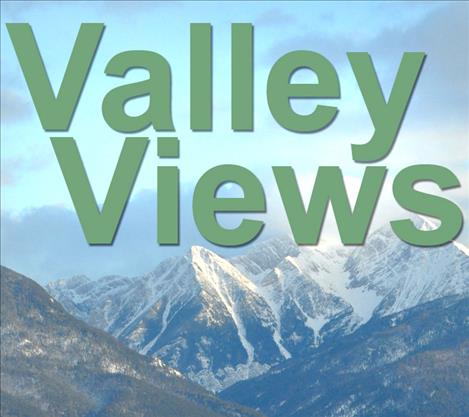Numbers reveal reasons Flathead Joint Board of Control opposes compact
Hey savvy news reader! Thanks for choosing local.
You are now reading
1 of 3 free articles.
Flathead Irrigation Project irrigators, more facts for you to consider in the Confederated Salish and Kootenai Tribal compact battle.
Here are some more facts. Fee patent irrigators pay $1,440,673 on operating and maintenance costs per year. Tribal irrigators pay $56,701 per year, non-district fee patents $56,473. The CSKT compact calls this an Indian Irrigation Project, what do these numbers tell you: 2,400 fee parent irrigators and 49 tribal irrigators, 121,00 acres to 10,939 acres?
Of these 130,000 acres, 60,000 acres have Walton right, original rights go with original allotments when sold — half the Flathead Irrigation Project.
The USA holds title to all reservoirs, diversions, pumps, buildings, as well as the right of way to maintain it, not the CSKT Tribe (2010 turnover). In the original and later fee patents, it plainly says: assigns forever right to any vested and accrued water right for mining, agricultural, manufacturing or other purpose, to the purchaser. These were signed by the president of the United States.
All Flathead Irrigation Project Irrigators already own the low cost block of power and net power revenue and two 50,000 acre-feet water right to run through Kerr Dam and Flathead pumps from the Flathead River. Flathead pump capacity is 46,000 acre feet per year, limited to a reservoir that holds 28,000 acre feet. All these rights and appropriations were passed by both the USA and state legislatures in 1904 and 1948. These were filed in the county courthouses, 1909-1912, that’s been the law of the land for 100-plus years.
In 1948 the final repayment contract was passed by Congress, signed by the president. There were other contracts drawn up, but they had to be amended to cover costs because the project grew. Sixty percent of the irrigators signed this contract from all districts, this put a lien on all our district land. Allotted Indian land construction costs on 121,000 acres were forgiven in 1926. Work done on the project in the 1980s extended the lien to 2033. We are sure the Bureau of Reclamation holds these liens. Congress passed the repayment contract along with the net power revenue to recover construction costs; Flathead Irrigation and Power, as it was known, went hand in hand with power and irrigation to make this valley successful, was Congress’ goal.
Power construction — now Mission Valley Power — and irrigation construction were the two first goals to be paid off with net power; old accrued costs and Indian construction costs were next, three and four; Indian operation and management credit was next, five and six. We have not seen yet reduction in fee land operation and maintenance costs. They call these power revenues.
The Flathead Joint Board of Control has opposed the CSKT compact for three main reasons: 1. It gives the water right for FIP irrigators to the CSKT in trust; 2. It takes 50 percent of historic water use away, no non-quota, no duty status, no stock water; 3. It creates a political board UMO/UMB for disputes and keeps you from the Montana Water Court system. You won’t have a chance in Tribal Court, and they all have to agree to let you move up to a higher court.
All statements above are true and fact and recorded history. That’s why we, the FJBC, take the stand we do. We have rights, property, water, right to our state and federal courts and God-given constitutional rights as Americans, our federal and state constitutions protect these rights. We also have branches of government — federal and state — to protect the citizens as well. If the first two are questionable in action, then you have the third judiciary to make sure the first two are in line. In 2015 this is the case.
You’re hearing all sorts of news these days. Don’t listen to threats of litigation costs or 10,000 claims, check the facts and truth.
















